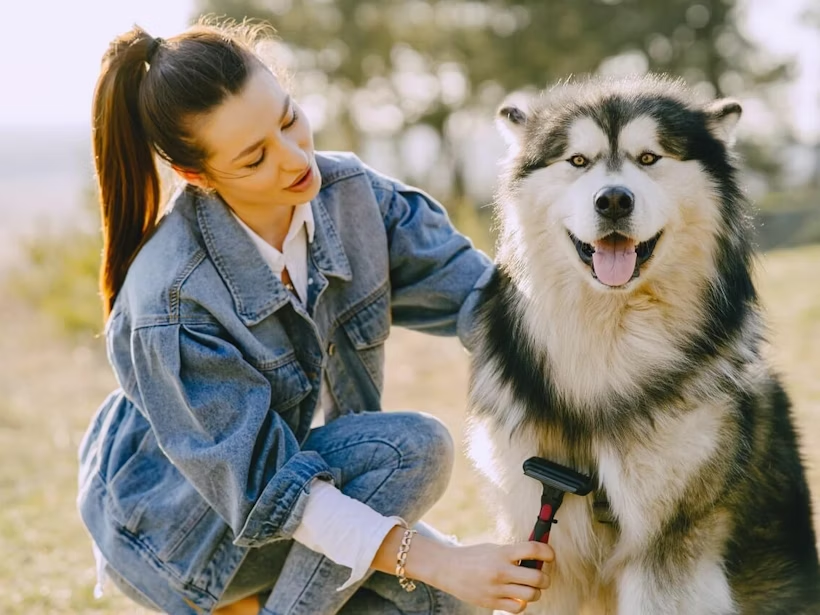From being cautious in the age of COVID-19 to merely wanting to save a few bucks, there are several reasons you might skip a trip to the groomer.
But that doesn’t mean your dog’s hygiene must suffer. Keep reading to learn how to beautify your pup from home.
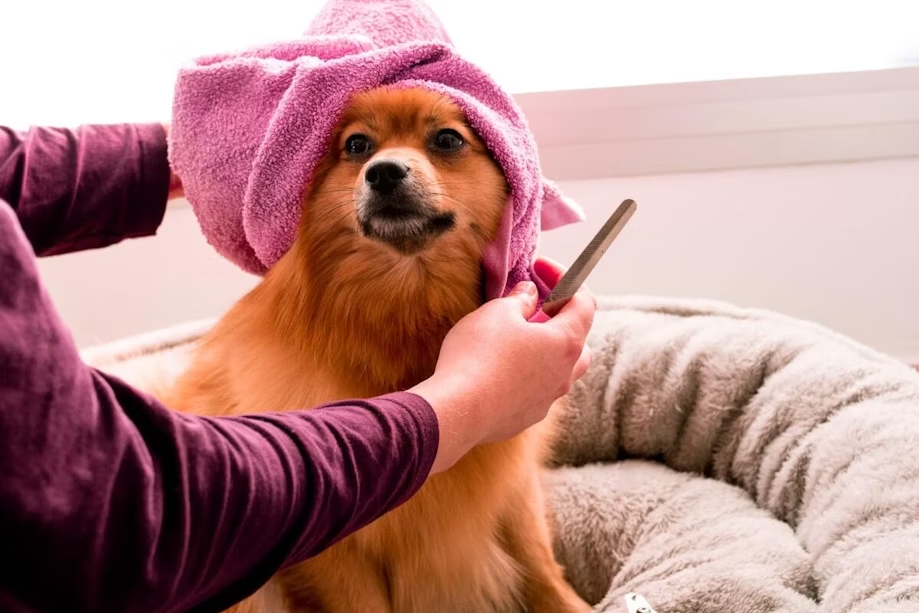
1. Determine your dog’s grooming needs.
Not all pups require the same level of grooming attention. For example, dogs with long coats and furnishings (like eyebrows and beards) often need more frequent brushing and bathing.
Breeds with the most demanding grooming needs include:
… to name a few.
Double-coated dogs and some terriers also need their undercoat stripped once or twice a year. And even certain short-haired breeds need regular brushing due to shedding. (Fun fact: Such dogs have a genetic mechanism that causes their coat to shed when it reaches a specific length—thus, the short hair.)
It’s important not to neglect your grooming duties. But on the other hand, it’s actually possible to groom too often. For example, frequent bathing can dry out your dog’s skin. And some dogs should never have their coat cut.
The best grooming schedule all depends on your dog’s breed(s). If you don’t know your dog’s ancestry, find out with a DNA test—and then get grooming recommendations from our breed library.
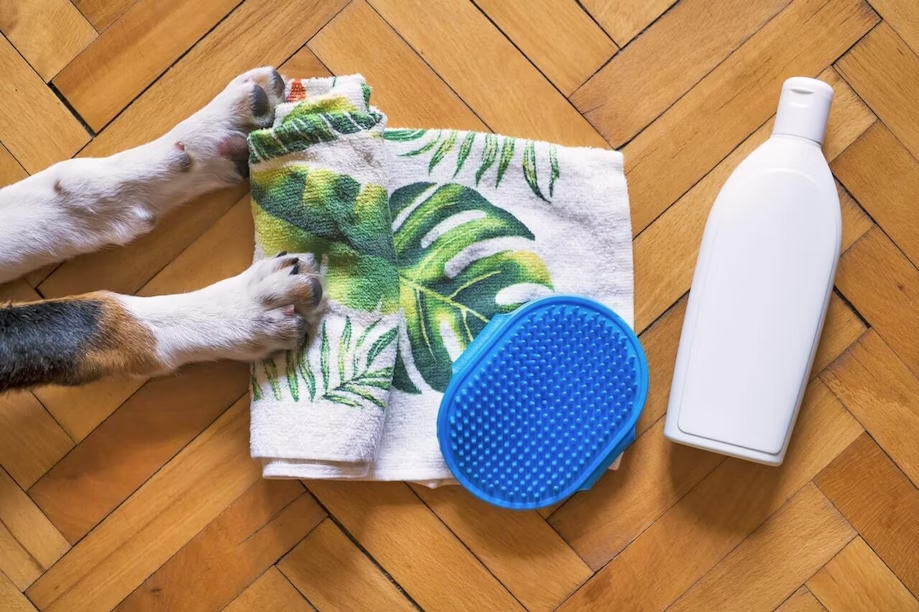
2. Prepare the proper equipment.
If you want your DIY grooming experience to go smoothly, you should invest in the right tools for your home pet salon.
- Brushes. Not all brushes are created equal, and many may not suit your pup’s coat. For example, long-toothed metal combs are good for thick fur, whereas a soft-bristled mitt-style brush might be better for a short-haired dog.
- Shampoos, conditioners, detanglers, etc. Soaps intended for humans can harm your pup’s skin pH, so you should always use hygiene products designed for dogs. Likewise, be considerate of your pup’s sensitive nose and never spray perfume on them.
- Toothbrush and toothpaste. Again, choose products made for dogs here. Human toothpaste often contains xylitol, which is poisonous to dogs, and fluoride, which can cause GI upset and even kidney problems in dogs. And since your pup’s mouth is shaped differently than yours, they need a different type of toothbrush. (If your dog can’t stand the toothbrush, try dental wipes.)
- Grooming surface. To make your dog more comfortable and keep them from slipping, place them on a flat, textured surface. In a pinch, you can lay a damp towel down to provide some traction. But the best solution is a grooming table. These typically also have leash attachments, which help keep your pup still.
- Scissors, clippers, and trimmers. Put down the craft scissors. If you intend to actually cut your pup’s hair—a job probably best left to the professional—it’s worth investing in high-quality, rounded- or blunt-edge scissors and dog grooming clippers. (Clippers designed for humans usually aren’t powerful enough for dog fur.) And don’t forget the nail trimmers.
For specific product recommendations, The Strategist has you covered.
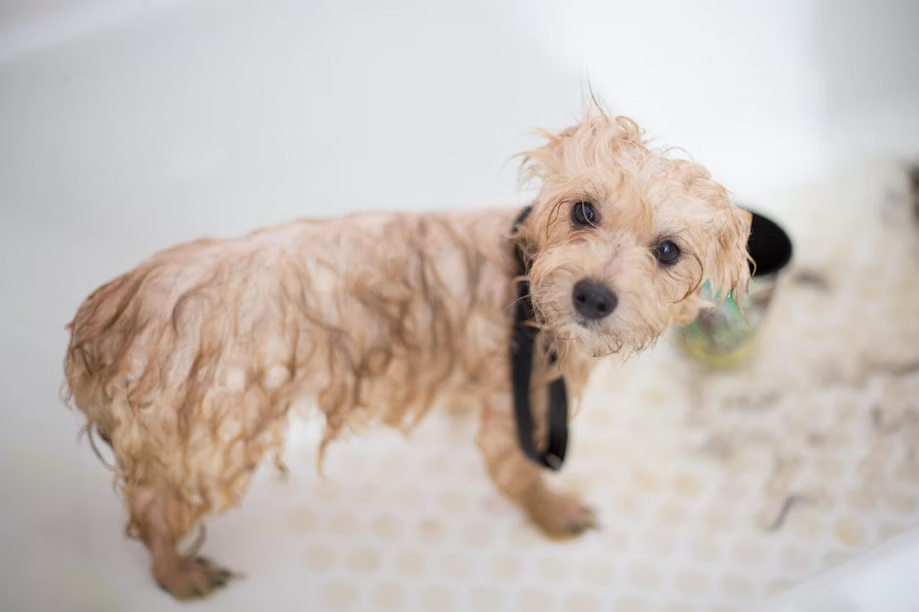
3. Get to grooming!
Grooming can be a stressful experience for all involved—especially at first. If your dog seems particularly nervous or uncomfortable, consider:
- Focusing only on the essentials. Does your dog really need a bath, or could you get away with a good brushing?
- Breaking the grooming process up. Your pup may prefer multiple sessions spread over several days.
- Creating positive associations. Treats always make unpleasant experiences a bit better!
With that in mind, here’s a checklist of grooming tasks to tackle.
Trimming nails
Overgrown nails can catch on things, chip, and generally cause your pup pain. Though pets’ nails gradually get filed down through normal activity, most dogs still need monthly nail trims.
If you haven’t handled your pup’s paws much (an important step of puppy socialization), this may be a challenge. Remember to stay calm, as your dog can sense your emotions. Knowing you’re on edge will likely make them harder to handle.
For a smaller dog, try holding them with their feet facing away from you as you trim. And for bigger dogs, having them lie on the floor is usually best. A co-groomer can be a big help here by distracting your pup with treats.
Important: If your dog has white nails, you may be able to see a faint pink area within them. That’s the “quick,” which contains a blood vessel and nerves. To prevent a bloody, painful experience, be sure to trim at the tip of the nail—where you don’t see the quick. (Keep some Kwik Stop or cornstarch on hand to stop the bleeding, just in case.) If your dog’s nails are dark, it’s impossible to know where the quick ends. So, we suggest clipping only a small amount off the tip at a time but more often.
While you’ve got their feet, use blunt-edge scissors to trim any excess fur growing from between their toes. This gives your dog better traction and helps prevent mats.
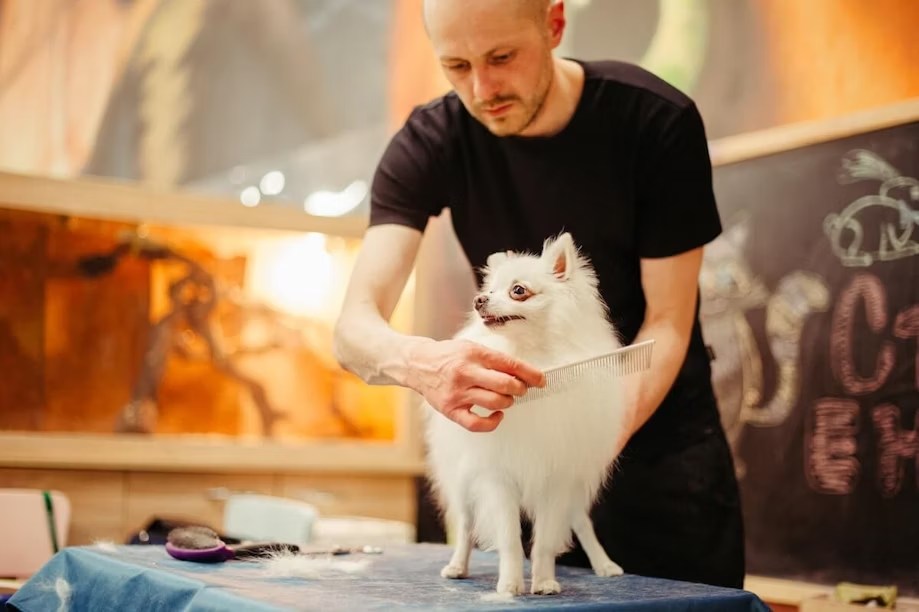
Brushing, washing, and trimming your dog’s coat
Regular brushing helps remove dirt, prevent mats, and reduce shedding. As a result, many breeds can get away with only a handful of baths a year, provided you brush often (and they don’t regularly get into something unsavory).
As mentioned before, the important detail here is that you use the right brush for your dog’s coat. If you’re not sure which brush to use, The Spruce Pets recently reviewed several options here.
When bathing, use tepid water and lather your pup’s coat well, focusing on the especially dirty areas—usually the face (avoiding the eyes), rear, and belly. Limit outdoor baths to summertime. Otherwise, your dog’s temperature may drop dangerously low.
After the bath, dry with a towel (for short coats) or blow dryer on the cool/warm setting (for long coats). Keep in mind that your dog may be fearful of a loud dryer. So, you might have to gradually work up to it through desensitization and lots of rewards.
Haircuts may be the one task you leave for the professional groomer. After all, a slip of the scissors could mean a goofy-looking pup at best or a trip to the emergency clinic at worst.
But if you’re confident and determined, here are a few things to keep in mind:
- Bathe and brush your dog first—clean, detangled fur is much easier to cut.
- Take extra care when trimming near sensitive areas, such as the eyes and ears.
- If using clippers, cut the direction the hair grows and check the heat of the blades periodically to make sure they don’t burn your pup.
And when in doubt, just trust the haircut to the professional.
Cleaning eyes and ears
Using a damp rag or grooming wipe, remove “sleep” and any other build-up or residue from the corner of your dog’s eyes as often as necessary.
Clean dog ears are paramount when it comes to preventing ear infections. Wipe out your pup’s ears using a cotton ball (never a cotton swab) soaked in one part water and one part apple cider vinegar, followed by a dry cotton ball. Alternatively, most pet stores carry dog-safe ear cleaning supplies that make the job a cinch.
Brushing teeth and gums
Dental care is one of the most important—yet most often neglected—jobs every pet parent should perform. Ideally everyday (but at least three times per week), brush your dog’s teeth and gums using a specially formulated toothpaste or dental wipes.
Besides giving your pup a winning smile, keeping their teeth clean will help guard against a myriad of health conditions—including heart, liver, and kidney disease. So, it’s important not to skip this one.
Get breed-specific grooming recommendations
Did you know that Huskies shed their undercoat twice a year? Or that Chihuahuas are particularly susceptible to dental issues due to their small mouths and crowded teeth? Learn about the unique grooming needs of hundreds of breeds.
Browse Breed Library